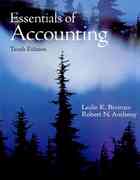Question
A. Suppose that a country has a nominal tariff rate of 10 percent on good A and imports $1,000 of good A, has a nominal
A. Suppose that a country has a nominal tariff rate of 10 percent on good A and imports $1,000 of good A, has a nominal rate of 5 percent on good B and imports $1,400 of good B, and has a nominal tariff rate of 15 percent on good C and imports $600 of good C. These are the only three goods in existence. Calculate the country's unweighted-average nominal tariff rate and its weighted-average nominal tariff rate. Explain in economic terms the relationship you have found between the two rates.
B. Suppose that, for a country, the free trade price of good X is $1,000 and the free trade prices of the only two inputs (both of which are imported) to the production process of good X are $400 for good W and $200 for good Y. Assume that one unit each of good W and good Y is necessary for the production of one unit of good X. Suppose now that the country, which is a "small" country, introduces a tariff structure that imposes a 20 percent nominal tariff on good X, an 8 percent tariff on good W, and a 6% tariff on good Y. Calculate the Effective Rate of Protection (ERP), or "effective tariff rate," that this tariff structure provides to the domestic producers of good X. Explain the economic meaning of your result. For what purpose might the ERP of an industry be more useful to an economist than the nominal tariff rate on imports of the industry's product?
Step by Step Solution
There are 3 Steps involved in it
Step: 1

Get Instant Access to Expert-Tailored Solutions
See step-by-step solutions with expert insights and AI powered tools for academic success
Step: 2

Step: 3

Ace Your Homework with AI
Get the answers you need in no time with our AI-driven, step-by-step assistance
Get Started


